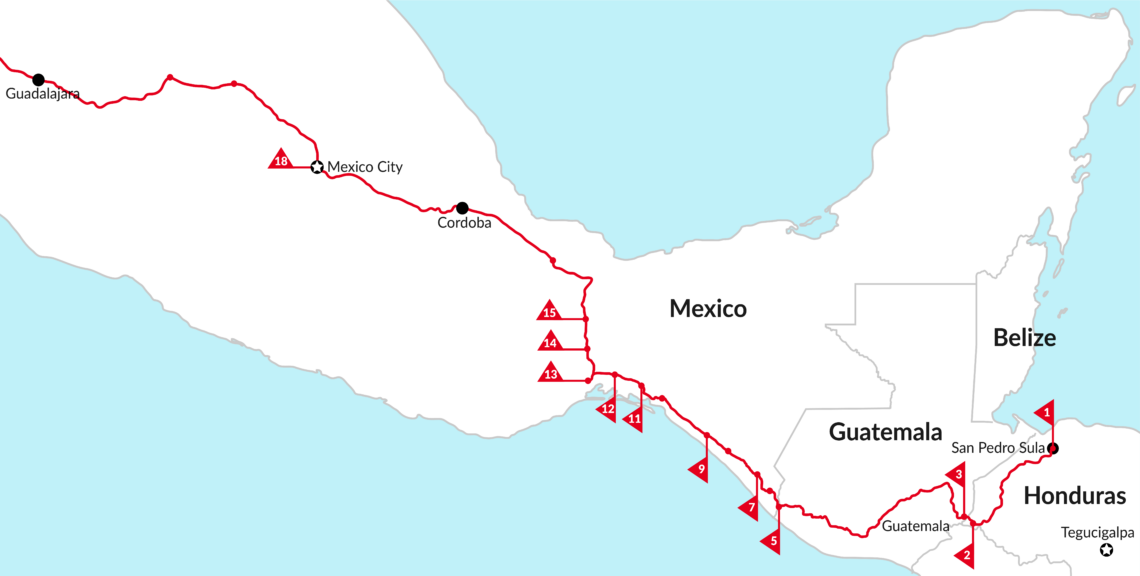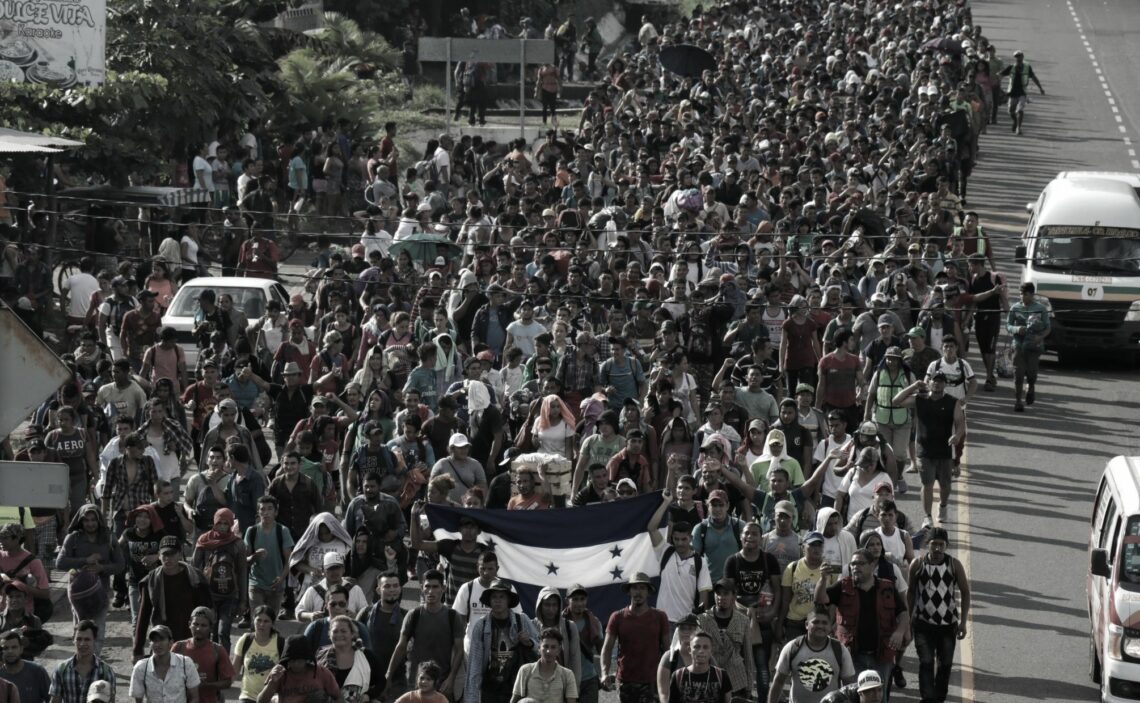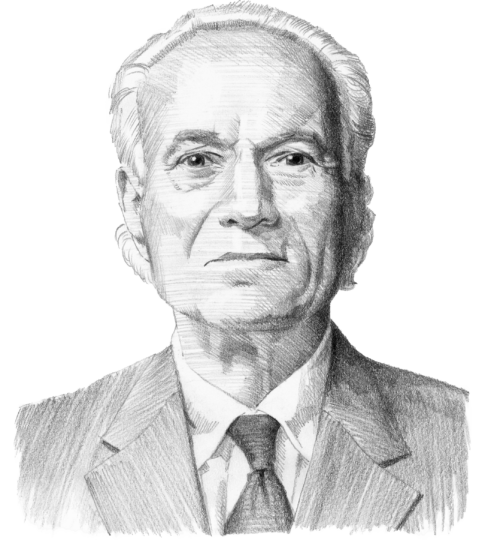The wrong response to the Caravan
President Trump has insinuated the migration from Central America resembles invasion. Now, he has threatened to rescind aid to the migrants’ countries of origin. Those programs are made to fight the region’s terrible crime and high unemployment – the reasons so many people are leaving their homes and heading for the U.S.

In a nutshell
- The Caravan of migrants from Central America are fleeing crime and destitution
- President Trump has reacted by making them an object of fear
- Rescinding aid programs will likely make the problem worse
On October 12, a group of perhaps a few hundred people, most of them destitute, gathered in San Pedro Sula, a city in northern Honduras, and decided that they no longer wanted to abide their state of poverty and insecurity. They resolved to walk – literally – to the United States to seek a better life. They claimed to feel disenfranchised by their government, which had stolen the last presidential election. They were unemployed and many of them feared for their lives: local gangs had threatened violence against them, their family or their neighbors.
Within a week of their departure, as they walked across Guatemala, they had become a band of several thousand, including groups from El Salvador and Guatemala. They were now known as “the Caravan” and had attracted journalists and activists from all over North and South America, as well as Europe. The Caravan was on the nightly news in every country in the hemisphere and soon became a media phenomenon.
Somehow, the marchers began to be seen as a symbol of the worldwide refugee crisis and a flash point for political debate in the final weeks of the U.S. midterm election campaign. It even played a role in the final days of the Brazilian presidential campaign and figured into the speeches of the victorious candidate, Jair Bolsonaro, who portrayed the migrant group as a specter of what might happen in Brazil if he were not elected.
Hyperdrive
U.S. President Donald Trump switched to hyperdrive in his reactions to the Caravan. At first, he blamed it all on the Democrats’ immigration policy. Then, he said there were some “very bad people” mixed into the group and even went so far as to say that “unknown people from the Middle East” were among the marchers. President Trump’s supporters on social media went even further, claiming that billionaire George Soros and “other Jews” were behind the march. These accusations are false.
The Caravan is a very modern creation. It came together so quickly because of social media.
What is true is that the Caravan is a very modern phenomenon. In addition to the powerful push factors already mentioned and the hope for a better life in the U.S., it came together so quickly because of social media and the activities of nongovernmental organizations in Honduras. Communication through social media continues to help protect the group.
President Trump threatened to seal off the southern U.S. border and has mobilized more than 5,000 troops to do the job. In the campaign, he used fear of the Caravan to stir his base. Both the person who sent pipe bombs to 12 people Mr. Trump had mentioned as his enemies or as “enemies of the people” and the person who murdered 11 Jews in a Pittsburgh synagogue were obsessed with the Caravan and the “invasion” of the U.S. It is no accident that hate crimes in the country have increased by 50 percent over the past 18 months.
Doubling down
In international affairs, President Trump has made several moves in response to the Caravan that will affect U.S. relations with the rest of the hemisphere. First, he called on the government of Mexico to halt the group, causing Mexicans to ask why they should do Mr. Trump’s dirty work when he had been so harsh in the recently concluded trade negotiations.
President-elect Andres Manuel Lopez Obrador (AMLO) has a long history of unfriendliness toward the U.S. and made no move to show his sympathy for Mr. Trump’s situation. On the contrary, his only public statement on the matter was to suggest offering members of the Caravan residence permits. Outgoing President Enrique Pena Nieto offered to help them find jobs in Mexico.

President Trump has also threatened to cut off all aid to Honduras, Guatemala and El Salvador – countries together known as the Northern Triangle – if their governments did not stop the exodus of their citizens.
And therein lies the rub. The vast majority of U.S. aid to these three countries goes to efforts to reduce crime and violence, and to alleviate poverty – the primary reasons behind the exodus. A more reasonable approach to curbing Central American immigration to the U.S. would appear to be to double down on the tiny aid programs already in place.
If we leave aside for the moment the corruption and authoritarian tendencies of the Central American governments involved, the levels of poverty and violence committed by organized criminal groups in the Northern Triangle countries is at catastrophic levels and rising. Employment opportunities are shrinking, while gangs and drug traffickers make daily life intolerable. These are the people who are marching north through Mexico. They represent a silent, desperate act of protest against the governments of their countries.
Ambivalence
The Trump administration has shown ambivalence to the Northern Triangle. In Honduras, it was quick to recognize the victory of President Juan Orlando Hernandez, although observers from the Organization of American States (OAS) and the United Nations were unequivocal in condemning the electoral fraud perpetrated by the winner. In Guatemala, President Trump has spoken positively about President “Jimmy” Morales and indicated he supported Mr. Morales in the struggle against the anti-corruption commission (the International Commission against Impunity in Guatemala, or CICIG) that was threatening his government. Destroying the CICIG would represent a crushing blow to the rule of law in Guatemala.
Taking the aid away from the Northern Triangle now is precisely the wrong approach.
At the same time, the U.S. has renewed its share of CICIG financing, even though it refuses to join the OAS or the UN in its efforts to maintain the work of the commission. Governments in both Honduras and Guatemala flaunt their violations of the rule of law and of the rights of its citizens.
Combine that with an unemployment rate in double digits and murder rates rising toward 100 per 100,000 population, and you have a sense of what drives the exodus. Taking the aid away from the Northern Triangle now is precisely the wrong approach. Nor will 5,000 troops at the border solve the problem. There are feasible, realistic, market-friendly options available. The United States should make use of them.








